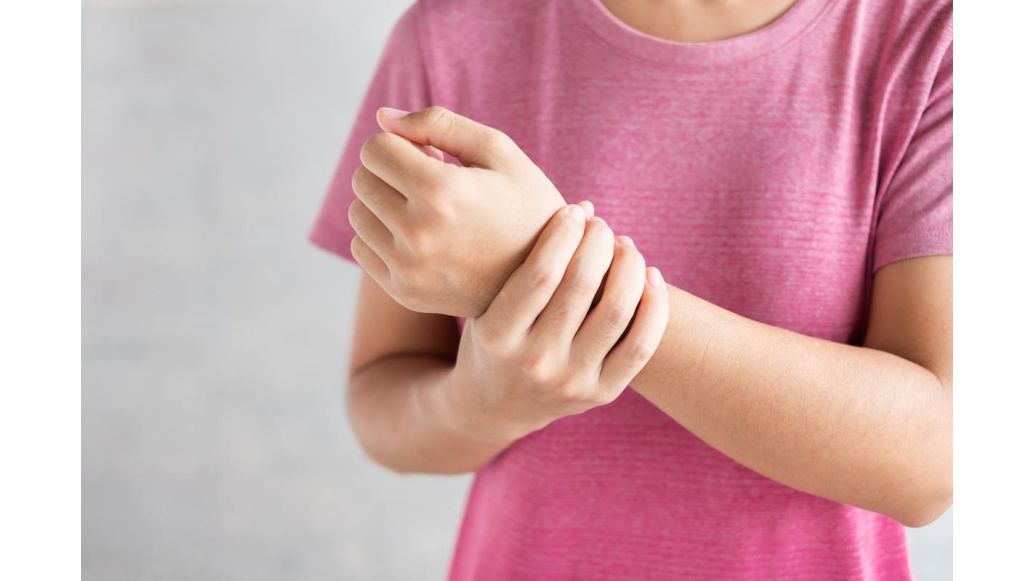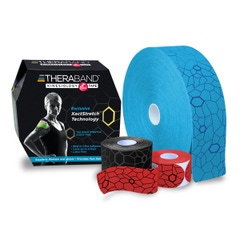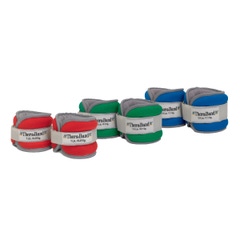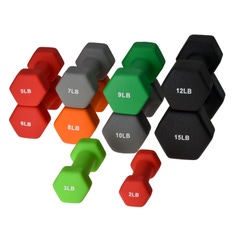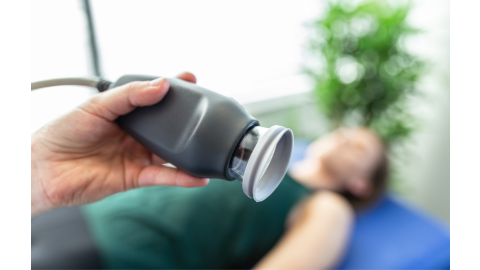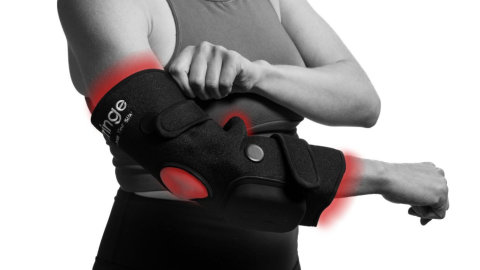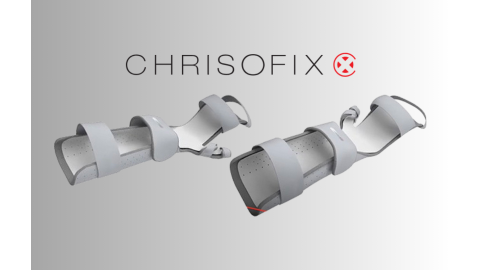Key Takeaways
- De Quervain’s tenosynovitis is a painful condition affecting the tendons in the wrist that lift the thumb
- The most common cause is daily overuse of the wrist and repetitive movements, that can cause irritation and pain
- Treatment is generally successful when begun early and may include medication, therapy, or in rare cases surgery
- Exercises to strengthen the wrist, avoiding actions that cause pain, and taking breaks can help reduce the chances of it occurring again
Top Products in This Article
De Quervain's tenosynovitis is a painful condition affecting the tendons in the wrist that lift the thumb. These tendons travel through a tight compartment on the thumb side of the wrist and when friction occurs, the tendons become inflamed and very painful.
Also called radial styloid tenosynovitis, and sometimes referred to as "mother's thumb," "mommy wrist," and "gamer's thumb,” the condition is associated with repetitive use of the hands and wrist. Repetitive hand or wrist movements can make the condition worse by increasing the swelling of the thumb tendons.2
Learn more about the symptoms, causes, treatment, and prevention of this condition:
- What Are the Symptoms of De Quervain’s Tenosynovitis?
- What Causes De Quervain’s Tenosynovitis?
- How is De Quervain’s Tenosynovitis Diagnosed?
- What Treatment is Available for De Quervain’s Tenosynovitis?
- What Exercises are Recommended for De Quervain’s Tenosynovitis?
- What Can I Do to Prevent De Quervain’s Tenosynovitis?
What Are the Symptoms of De Quervain’s Tenosynovitis?
The main symptoms are pain and tenderness at the base of the thumb on the palm side of the wrist. It hurst when you turn your wrist, grasp anything, or make a fist.
- The pain may appear either gradually or suddenly
- Pain is felt in the wrist and can travel up the forearm
- Swelling is seen over the thumb side of the wrist
- A “catching” or “snapping” feeling may occur when you move your thumb
What Causes De Quervain’s Tenosynovitis?
The most common cause of De Quervain’s tenosynovitis is daily overuse of the wrist. Repetitive movements day after day can cause irritation and pain. You are more likely to develop symptoms4 if:
- You are a woman
- You are 40 years of age or older
- Your hobby or job involves repetitive hand and wrist motions
- You have injured your wrist (scar tissue can restrict the movement of your tendons)
- You are pregnant (hormonal changes during pregnancy can cause it)
- You have arthritis
How is De Quervain’s Tenosynovitis Diagnosed?
Your physician may ask you to perform the Finkelstein test to determine whether you have De Quervain’s tendinosis. The test is performed by placing your thumb against your hand, making a fist with your fingers closed over your thumb, and then bending your wrist toward your little finger. This test is quite painful, causing tendon pain on the thumb side of the wrist.3
What Treatment is Available for De Quervain’s Tenosynovitis?
Treatment is generally successful when started early and relieves symptoms. Some options include:
- Over the counter pain relievers or anti-inflammatory medications such as ibuprofen (Advil) or naproxen (Aleve)
- Wearing a splint 24 hours a day for 4 to 6 weeks to rest your thumb and wrist
- Taping the wrist and thumb with kinesiology tape may also help to assist in relieving the pain associated with De Quervain’s syndrome and other causes of pain with thumb extension
- Corticosteroid medications or steroid injection into the tendon sheath to reduce swelling and decrease inflammation
- Sometimes surgery is necessary. It is an outpatient procedure where the sheath surrounding the tendon is opened, releasing pressure, and allowing the tendons to glide more freely and pain free
What Exercises are Recommended for De Quervain’s Tenosynovitis?
Strengthening exercises5 have been shown to speed up the healing process and reduce your symptoms. Follow the exercise routine suggested by your doctor or physical therapist. Be sure to tell him or her about any activities that cause pain, numbness, or swelling.
- Only stretch to where you feel comfortable
- Don’t force any of the positions
- Keep movements even, slow, and smooth
- Avoid any jerky movements
Wrist Extension
- Hold cuff weight or hand weight in your hand
- Place your forearm on your knee with your wrist flexed and hand facing down
- Lift your hand upward, extending your wrist
- Hold and slowly return
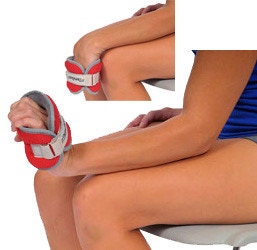
Wrist Flexion
- Hold cuff weight or hand weight in your hand
- Place your forearm on your knee with your wrist extended and palm facing upward
- Lift your palm upward, flexing your wrist
- Hold and slowly return
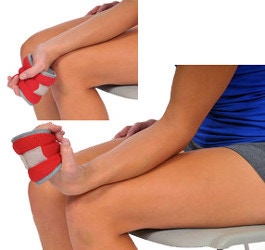
Wrist Radial Deviation
- Stabilize bent elbow on table and grasp one end of the TheraBand FlexBar, with the other end resting on the table just in front of the elbow
- Wrist should be in neutral position and non-exercising hand is placed on bent elbow for stabilization
- Keeping forearm stationary, gently pull up against the resistance of the FlexBar to bend hand up towards shoulder
- Hand is moving toward the thumb side to exercise the muscles responsible for radial deviation

Grip Strengthening
- Form putty into a ball
- Squeeze putty ball for five seconds at a time
- Do 2 sets of 15

What Can I Do to Prevent De Quervain’s Tenosynovitis?
After treatment, De Quervain’s tendinosis can be prevented by changing the activities that cause pain. Taking breaks and avoiding the actions that cause pain can help lessen your chances of it happening again.
Sammons Preston Wrist Brace with Thumb Spica

TheraBand Kinesiology Tape

TheraBand Ankle & Wrist Weight Sets

Sammons Preston Individual Neoprene Dumbbells

TheraBand FlexBar
Sammons Preston Therapy Putty - Set of 5

References
1. Mayo Clinic Medical Professional. (July 2020). De Quervain’s tenosynovitis. Mayo Clinic. Retrieved from https://mayocl.in/2XhCLc4
2. Streed, Joel. (November 2019). Mayo Clinic News Network. Retrieved from https://mayocl.in/399YIwA
3. American Academy of Orthopaedic Surgeons. (December 2013). De Quervain’s Tendinosis. Retrieved from https://bit.ly/2VJvQbb
4. American Academy of Family Physicians. (May 2020). Familydoctor.org editorial staff. Retrieved from https://bit.ly/3En4RUg
5. Healthline Medical Professional. (November 2018). 10 Exercises for De Quervain’s Tenosynovitis. Retrieved from https://bit.ly/3nBCHzc
Medical Disclaimer: The information provided on this site, including text, graphics, images and other material are for informational purposes only and are not intended to substitute for professional medical advice, diagnosis or treatment. Always seek the advice of your physician or other healthcare professional with any questions or concerns you may have regarding your condition.








 France
France Australia
Australia